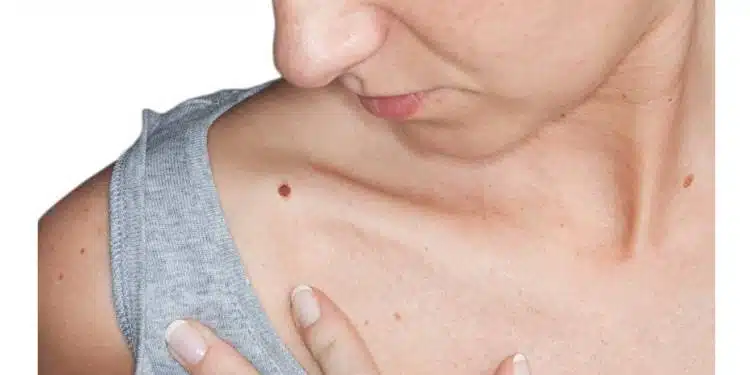Do I have skin cancer?
It’s during these hot and humid days of summer when we dress in sleeveless shirts and shorts that sun exposure is at a maximum. We find skin imperfections and growths that we’re not really sure were there before. Our friends and family notice and point out to us discolorations and skin markings that we may or may not be familiar with, that make us wonder, are these moles healthy or do I have skin cancer. Especially the ones found on our backs and on the backs of our legs. Patients come into my office inquiring about the health of such skin findings and I praise them for getting medical attention because when found early, almost all skin cancer is curable.
|
Skin cancer: the most common cancer in U.S.
Skin cancer is the most common type of cancer in the United States as one in five Americans will be diagnosed with skin cancer in their lifetime. Almost 10,000 new cases of skin cancer are diagnosed daily. The three most common types of skin cancer are basal cell carcinoma, squamous cell carcinoma, and malignant melanoma.
Basil cell carcinoma
Basal cell carcinomas usually develop on areas of the body left exposed to the sun. Although it may appear as a skin colored, slightly translucent bump, it can look pearly white or pink on white skin or brown or glossy black on darker complexions. A basal cell carcinoma may also present as a flat scaly patch, sometimes with a raised translucent border. More rarely, it can appear as a white, waxy scar-like lesion without clearly defined borders.
Squamous cell carcinoma
Squamous cell carcinomas are also typically found on sun exposed skin surfaces,but can occur anywhere on the body. These types of skin cancers can present as a red firm nodule, or as a flat sore with a crust that doesn’t heal.
Malignant melanomas
Malignant melanomas are most commonly found on the backs of men and on the legs of women. They can be found anywhere on the body though including between the toes, on fingernail beds and on the soles of the feet.
Malignant melanoma is the least common form of skin cancer, but the most deadly. When checking your skin, use the ABCDE checklist to evaluate your moles.
The ABCDE checklist: Use to identify skin cancer
A – Asymmetry: Common healthy moles are usually symmetric, so one half of a mole looks just like the other half. Most melanomas are asymmetric. If you draw a straight line through a melanoma, one half doesn’t look like the other half.
B – Border: Borders of a healthy mole are usually smooth and even. Most melanomas have irregular or scalloped borders. Sometimes the borders are not well defined.
C – Color: Healthy moles are usually a single shade of brown. Most melanomas have multiple shades of brown, tan or black. They may even turn red, blue or white as they grow.
D – Diameter: Most healthy moles are smaller than 6 mm, which is about the size of a pencil eraser. See a dermatologist to evaluate moles larger than 6 mm.
E – Evolving: Visit your dermatologist to evaluate any mole that changes in size, shape or color. Similarly, visit the doctor for or growths that bleed, itch, or develop a crust or scale.
The bottom line
Be sun smart. I tell my patients to enjoy the outdoor sunshine during the summer, but keep the risks in mind. It’s important to understand how to identify skin cancer I encourage everyone to:
- minimize direct midday sun exposure
- apply sunscreen liberally and often
- perform monthly self-exams
- seek medical attention if they notice new or changing moles
As I said above, when caught early, skin cancer is treatable and curable. So…it just makes sense not to delay getting checked out if you see something that concerns you.
Fayne Frey, M.D.

Fayne Frey, M.D., is a board-certified clinical and surgical dermatologist practicing in West Nyack, New York. She specializes in the diagnosis and treatment of skin cancer and is a nationally recognized expert in the effectiveness and formulation of over-the-counter skincare products. As a speaker, Dr. Frey captivates audiences with her wry observations regarding the skincare industry. She consulted for numerous media outlets, including NBC, USA Today, and, the Huffington Post, and shared her expertise on both cable and major TV outlets. Dr. Frey is the Founder of FryFace.com, an educational skincare information and product selection service website that simplifies the overwhelming choice of effective, safe and affordable products available. Dr. Frey is a fellow of both the American Academy of Dermatology and the American Society for Dermatologic Surgery.
Disclosure: This article is intended to be educational and not construed as medical advice. Please see your doctor if you have concerns about possible skin cancer.










